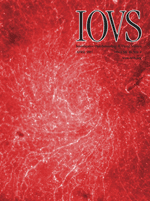
“The diurnal cycling of intraocular pressure (IOP) was first described in humans more than a century ago. This cycling is preserved in other species. The physiologic underpinning of this diurnal variation in IOP remains a mystery, even though elevated pressure is indicated in most forms of glaucoma, a common cause of blindness. Once identified, the system that underlies diurnal variation would represent a natural target for therapeutic intervention.
We now report that NAPE-PLD and FAAH mice do not exhibit a diurnal cycling of IOP. These enzymes produce and break down acylethanolamines, including the endogenous cannabinoid anandamide. The diurnal lipid profile in mice shows that levels of most N-acyl ethanolamines and, intriguingly, N-arachidonoyl glycine (NAGly), decline at night: NAGly is a metabolite of arachidonoyl ethanolamine and a potent agonist at GPR18 that lowers intraocular pressure. The GPR18 blocker O1918 raises IOP during the day when pressure is low, but not at night. Quantitative PCR analysis shows that FAAH mRNA levels rise with pressure, suggesting that FAAH mediates the changes in pressure.
CONCLUSIONS:
Our results support FAAH-dependent NAGly action at GPR18 as the physiologic basis of the diurnal variation of intraocular pressure in mice.”
